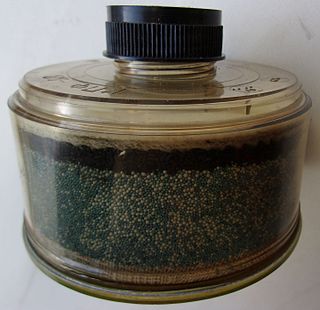Related Research Articles

The Zip drive is a removable floppy disk storage system that was announced by Iomega in 1994 and began shipping in March 1995. Considered medium-to-high-capacity at the time of its release, Zip disks were originally launched with capacities of 100 MB, then 250 MB, and finally 750 MB.
A digital video recorder (DVR) is an electronic device that records video in a digital format to a disk drive, USB flash drive, SD memory card, SSD or other local or networked mass storage device. The term includes set-top boxes (STB) with direct to disk recording, portable media players and TV gateways with recording capability, and digital camcorders. Personal computers are often connected to video capture devices and used as DVRs; in such cases the application software used to record video is an integral part of the DVR. Many DVRs are classified as consumer electronic devices; such devices may alternatively be referred to as personal video recorders (PVRs), particularly in Canada. Similar small devices with built-in displays and SSD support may be used for professional film or video production, as these recorders often do not have the limitations that built-in recorders in cameras have, offering wider codec support, the removal of recording time limitations and higher bitrates.
Smell-O-Vision is a system that released odour during the projection of a film so that the viewer could "smell" what was happening in the movie. Created by Hans Laube, the technique made its only appearance in the 1960 film Scent of Mystery, produced by Mike Todd Jr., son of film producer Mike Todd. The process injected 30 odors into a movie theater's seats when triggered by the film's soundtrack.

Febreze is an American brand of household odor eliminators manufactured by Procter & Gamble. It is sold in North America, South America, Europe, Africa, Asia, Australia, and New Zealand.

An aroma compound, also known as an odorant, aroma, fragrance or flavoring, is a chemical compound that has a smell or odor. For an individual chemical or class of chemical compounds to impart a smell or fragrance, it must be sufficiently volatile for transmission via the air to the olfactory system in the upper part of the nose. As examples, various fragrant fruits have diverse aroma compounds, particularly strawberries which are commercially cultivated to have appealing aromas, and contain several hundred aroma compounds.

Air fresheners are products designed to reduce unwanted odors in indoor spaces, or to introduce pleasant fragrances, or both. They typically emit fragrance to mask odors, but may use other methods of action such as absorbing, bonding to, or chemically altering compounds in the air that produce smells, killing organisms that produce smells, or disrupting the sense of smell to reduce perception of unpleasant smells.

Petrichor is the earthy scent produced when rain falls on dry soil. The word is constructed from Ancient Greek πέτρα (pétra) 'rock', or πέτρος (pétros) 'stone', and ἰχώρ (ikhṓr), the ethereal fluid that is the blood of the gods in Greek mythology.

A flash cartridge is one of several cartridges containing flash memory that have been developed for use in video game consoles. These cartridges enable homebrew applications and games to be used. Flash cartridges offer a means of storage for keeping the games until a user decides to run a game, which then it is copied to the cartridge's game ROM for the console to run the game as if it were a normal ROM cartridge. The game storage can be in the form of onboard flash memory on the cartridge, although more recent cartridges use external memory cards as storage in place of onboard memory, such as Compact Flash or Secure Digital memory cards. Recent flash cartridges may also use RAM instead of ROM for flashing games to run on the console as a way to offer faster loading times than what is possible on reprogrammable ROM.
Aromachology is the study of the influence of odors on human behavior and to examine the relationship between feelings and emotions. Those who practice aromachology are aromachologists. Aromachologists analyze emotions such as relaxation, exhilaration, sensuality, happiness and well-being brought about by odors stimulating the olfactory pathways in the brain and, in particular, the limbic system. Different wearers are thought to have unique physiological and psychological responses to scents, especially those not manufactured synthetically but based on real scents. The word "aromachology" is derived from "aroma" and "physio-psychology", the latter being the study of aroma. This term was coined in 1989 by what is now the Sense of Smell Institute (SSI), a division of The Fragrance Foundation. The SSI defines aromachology as "a concept based on systematic, scientific data collected under controlled conditions". The term is defined as the scientifically observable influence of smell on emotions and moods. Consumers use aromachology to alleviate time pressures, for relaxation or stimulation and as a component of other activities that generate a feeling of well-being.

The Nintendo Wi-Fi USB Connector is a wireless game adapter, developed by Nintendo and Buffalo Technology, which allows the Nintendo DS, Wii and 3DS users without a Wi-Fi connection or compatible Wi-Fi network to establish an Internet connection via a broadband-connected PC. When inserted into the host PC's USB port, the connector functions with the Nintendo DS, Wii, DSi and 3DS, permitting the user to connect to the Internet and play Nintendo games that require a Wi-Fi connection and access various other online services. According to the official Nintendo website, this product was the best-selling Nintendo accessory to date on 15 November 2007, but was discontinued in the same month. On September 9, 2005, Nintendo announced the Nintendo Wi-Fi Network Adapter, an 802.11g wireless router/bridge which serves a similar purpose.
MojoPac was an application virtualization product from RingCube Technologies. MojoPac turns any USB 2.0 storage device into a portable computing environment. The term "MojoPac" is used by the company to refer to the software application, the virtualized environment running inside this software, and the USB storage device that contains the software and relevant applications. MojoPac supports popular applications such as Firefox and Microsoft Office, and it is also high performance enough to run popular PC Games such as World of Warcraft, Minecraft and Half-Life 2.

A game backup device, informally called a copier, is a device for backing up ROM data from a video game cartridge to a computer file called a ROM image and playing them back on the official hardware. Recently flash cartridges, especially on the Game Boy Advance and Nintendo DS platforms, only support the latter function; they cannot be used for backing up ROM data. Game backup devices also make it possible to develop homebrew software on video game systems. Game backup devices differ from modchips in that modchips are used in conjunction with systems that use generally available media such as CDs and DVDs, whereas game backup devices are used with systems that use cartridges.

An odor or odour is caused by one or more volatilized chemical compounds that are generally found in low concentrations that humans and many animals can perceive via their sense of smell. An odor is also called a "smell" or a "scent", which can refer to either an unpleasant or a pleasant odor.
Thunderbolt is the brand name of a hardware interface for the connection of external peripherals to a computer. It was developed by Intel in collaboration with Apple. It was initially marketed under the name Light Peak, and first sold as part of an end-user product on 24 February 2011.

The Razer Switchblade was a concept design of a portable gaming device developed by Razer. It was first unveiled on January 5, 2011 at the Consumer Electronics Show (CES). The Switchblade won The Best of CES 2011 People's Voice award.

Digital scent technology is the engineering discipline dealing with olfactory representation. It is a technology to sense, transmit and receive scent-enabled digital media. The sensing part of this technology works by using olfactometers and electronic noses.

The Retrode is a USB adapter for legacy video games that enabled the use of game cartridges and controllers with emulators. Technically, the Retrode could be considered a ROM dumper in that it could create a copy of the cartridge content. Unlike most such devices, the Retrode could be operated without drivers or special software under the most popular operating systems. It further allowed the emulator to directly access the game data through the file system, eliminating the need to create a ROM image as a separate step. By default, the Retrode was equipped with cartridge slots and controller ports for the SNES and Sega Genesis game consoles; support for cartridges and controllers for other systems could be added via so-called plug-in adapters that users can buy online or make themselves.
A smelling screen is a type of digital scent technology, unveiled in 2013, that combines a display screen, similar to a television or computer monitor, with an odor emitting device capable of pinpointing the smell to a specific portion of the displayed image. It is believed to be the first device to incorporate smells into a television screen, though certainly not the first to synchronize smell with a displayed image.
Scentography is the technique of creating and storing odor by artificially recreating a smell using chemical and electronic means.

A respirator cartridge or canister is a type of filter that removes gases, volatile organic compounds (VOCs), and other vapors from air through adsorption, absorption, or chemisorption. It is one of two basic types of filters used by air-purifying respirators. The other is a mechanical filter, which removes only particulates. Hybrid filters combine the two.
References
- ↑ Martin, James A. (1999-10-13). "Sniff That Web Site". PC World . Archived from the original on 2007-01-15. Retrieved 2007-07-06.
- ↑ Tynan, Dan (May 26, 2006). "The 25 Worst Tech Products of All Time". PC World. Retrieved 2022-12-15.
- ↑ Dusi, Andrea (2014-01-19). "Why ISmell failed, besides 20M $? The smell of failure". Startup Over. Archived from the original on 2019-03-21. Retrieved 2020-02-01.
- ↑ "Smell that Perfume Online - PCQuest". PCQuest. 2001-06-18. Retrieved 2018-02-16.
- ↑ "How Internet Odors Will Work." HowStuffWorks, HowStuffWorks, 5 Jan. 2001, computer.howstuffworks.com/internet-odor1.htm.
- ↑ Platt, Charles (1999-01-11). "You've Got Smell!". Wired.com. Retrieved 2018-02-16.
- ↑ Dusi, Andrea (2014-01-19). "Why ISmell failed, besides 20M $? The smell of failure". Startup Over. Archived from the original on 2019-03-21. Retrieved 2020-02-01.
- 1 2 "How Internet Odors Will Work". HowStuffWorks. 2001-01-05. Retrieved 2018-02-16.